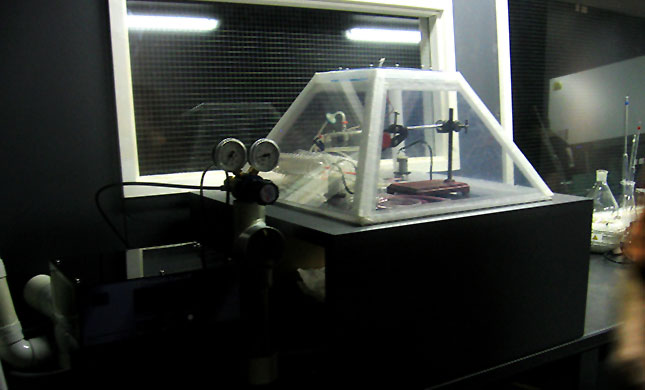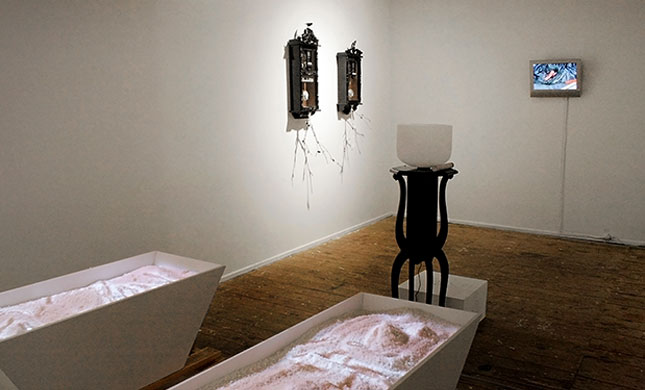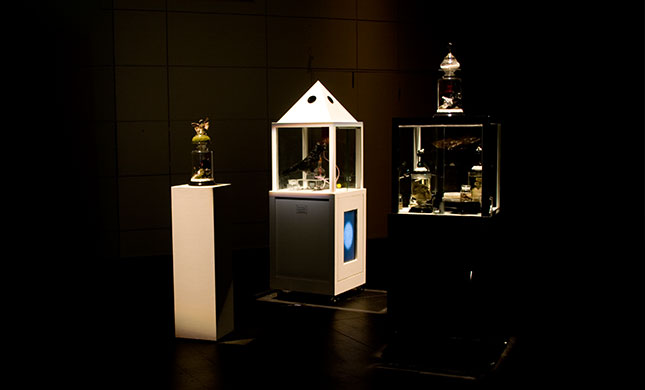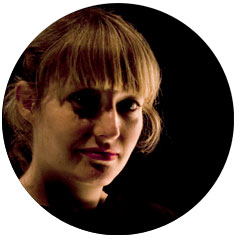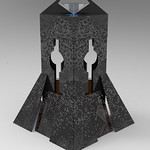THE IMMORTALISATION OF KIRA AND RAMA
OVERVIEW
The Immortalisation of Kira and Rama is an ArtScience project by Svenja Kratz that was researched and developed during a three month residency at SymbioticA – Centre of Excellence in the Biological Arts – in 2010. The project involved the isolation and display of living cells isolated from the skin of two fetal calves (Kira and Rama) in a custom Egyptian-inspired bioreactor along with various relics from the calves’ bodies (teeth, hide, slides of organs, hearts).
The project was inspired by the way in which contemporary technologies, such as cell and tissue culture, alter our perceptions of life and death, as viable cells can be obtained from bodies of organisms that have been dead for over a day. Maintained in the correct conditions, these cells can live for numerous months and even be frozen in liquid nitrogen to be revived months, or even years, later. Through further manipulation such as the introduction of viral DNA, or exposure to chemical agents, the cells can also be immortalised, enabling them to replicate potentially indefinitely.
The project also has strong links to the artist’s previous works that investigated the use of Fetal Bovine Serum (FBS) in cell and tissue culture (see A Shrine for Algernon). FBS is a protein rich serum used in cell culture that is derived from the blood of fetal calves. Fetal calves are most commonly used to produce the serum, as they are a bi-product from meat production. Through the use and display of fetal calf cells, the project aims to draw attention to the fact that as consumers we are complicit in a range of often unseen practices of consumption.
To further these links, viewers were invited to eat meat pies incorporating the flesh of the deceased mother’s who were killed for meat production as part of the exhibition opening event for Towards the Immortalisation of Kira and Rama.
DETAILS
Development of the project underwent several stages with different instances being exhibited at Metro Arts (Brisbane) and The Science Gallery (Dublin) in 2010. In 2011, the project was finally realised through the production and exhibition of a bioreactor prototype displaying the revived cells of the fetal calf (Kira) seeded into a beaded silkworm cocoon along with relics from the calves bodies and two miniature dioramas created from their hide). The work was exhibited as part of The Absence of Alice and the Bone Gardens at QUT.
The project remains in development with the aim of immortalising the cells of Kira and Rama.
ACKNOWLEDGEMENTS
The Immortalisation of Kira and Rama was researched and developed during a residency at SymbioticA, the Centre of Excellence in Biological Arts in the School of Anatomy & Human Biology at The University of Western Australia. Production of this works relied on expert input from SymbioticA staff, The Tissue Culture and Art Project and research scientists. Thanks are extended to Oron Catts and Ionat Zurr for input during development phases and SARG and Dusty Tame and John Barnard for initial bioreactor prototyping. The final bioreactor prototype was developed with assistance from IHBI members Dr Tristan Kroll and Leo Leung and CIF visual art technician Michael Riddle.



